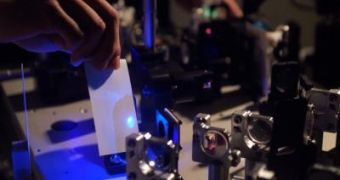Photosynthesis is, undoubtedly, the most important process on Earth, and is also the main source of oxygen for animals and humans. It occurs when the vegetation harvests carbon dioxide and sunlight from the atmosphere, and releases oxygen back, while at the same time generating energy for itself. Directly responsible for this ability is the chlorophyll, a molecule that facilitates the capture of all wavelengths of the electromagnetic spectrum. It's also the main factor behind the color that leaves have when they're not dying.
Spearheading this investigation was an international team of researchers, from the Arizona State University (ASU), University of California in San Diego (UCSD) and the University of British Columbia (UCB). The experts conducted their studies of the chlorophyll molecules on the Rhodobacter sphaeroides photosynthetic bacteria, which was, in all likeliness, one of the primeval organisms in Earth's history to harness the power of light.
By manipulating the “reaction center” of the bacteria – the inner portions of the chlorophyll, where the metal magnesium can be usually found – the scientists learned that the reason why bacteria and similar microorganisms were so good at surviving was the fact that they had a large number of mobile proteins in the chlorophyll, which were able to stimulate the normal mechanisms of energy conversion inside the plants by actively moving chlorophyll to where its output would be maximum. This basically ensures that the plant doesn't die when it's cloudy outside.
“One of our research strategies is to introduce mutations into the bacteria and study how these affect the energy conversion efficiency of the reaction center. Carefully-designed aberrations provide extensive information about the normal mechanism of energy conversion in reaction centers, just like studying a disease clarifies the parameters of health for the involved biochemical pathways and tissues. From this, we can learn a lot about the most basic mechanisms of photosynthesis,” Su Lin, PhD, explained.
Lin, who is a senior researcher at the ASU Department of Chemistry & Biochemistry and the Biodesign Institute, has also been the lead author of a new scientific paper detailing the finds, published in the early May 11th online issue of the journal Proceedings of the National Academy of Sciences. She added that an increasingly common human invention, namely solar panels, was basically an attempt to imitate photosynthesis, but that we managed to do this very poorly. Solar panels can't even get close to the efficiency that chlorophyll has in processing light, and lose a large amount of the energy they are bombarded with.

 14 DAY TRIAL //
14 DAY TRIAL //